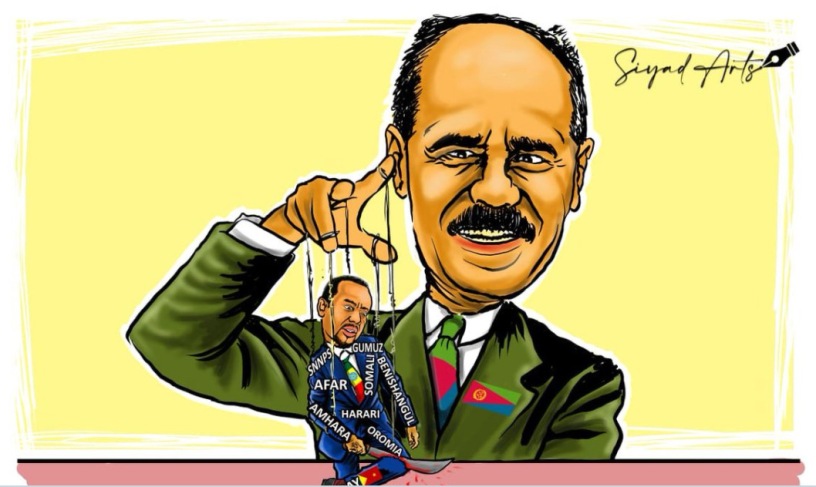Responsibility for the tragic war in Tigray is being laid at the door of Ethiopia’s Prime Minister, Abiy Ahmed. But the real culprit is further north.
Eritrea’s President Isaias has plotted and schemed ever since his forces captured Asmara in 1991. Not satisfied with turning his own country into the most repressive state in Africa – without a functioning constitution, parliament, press or freedom of speech, assembly or religious expression – he has intervened in every one of his neighbours.
- President Isaias has supported Sudanese rebels, fought with Djibouti, Yemen and Ethiopia (1998 – 2000),
- When the Islamic Courts fled from Somalia, they found a haven in Asmara. President Isaias backed the Islamist group, al-Shabaab,
- Ethiopian rebel movements were given training and logistical support by President Isaias. In July 2011 the UN Monitoring group on Somalia and Eritrea accused the Eritrean government of plotting to bomb the AU headquarters in Addis Ababa during the summit of African heads of state in January 2011.
US concerns about Eritrea’s role in the Tigray war
President Isaias considered military intervention in Tigray long before war broke out in November 2020.
As President Isaias stated when he gave his annual interview on Eritrean television, he began planning for the war after meeting the Tigrayan leader, Debretsion Gebremichael in Omhajer in January 2019.
When the war in Tigray erupted, Eritrean forces attacked from the north, joining offensives by Ethiopian troops and Amhara militia from the south and the east.

The involvement of the Eritrean forces in Tigray is now accepted by the United States, the European Union and Britain. Even the Ethiopian government now quietly admits their role in this war.
There has been wide condemnation of the role of Eritrean troops in atrocities in the town of Axum and beyond.
President Biden has drawn a line in the sand.
On 27 February Secretary of State Antony Blinken said that: “The immediate withdrawal of Eritrean forces and Amhara regional forces from Tigray are essential first steps.”
According to diplomatic sources, Secretary of State Blinken spoke to Ethiopian Prime Minister Abiy twice in early March, and told him that Eritrean and Amhara forces must be withdrawn from Tigray within 72 hours.
This has not taken place.
There is a great deal at stake
In November 2020, a day after the Tigray war broke out, a range of senior American former diplomats issued a statement.
They warned that the conflict could lead to the: “acceleration of polarization amid violent conflict [which] would also mark the death knell for the country’s nascent reform effort that began two years ago and the promise of a democratic transition that it heralded.” This could lead to “the fragmentation of Ethiopia [which] would be the largest state collapse in modern history.”
This fragmentation would not just threaten the Horn of Africa, it could be send ripples of instability across the Arab world and into the rest of Africa.
It would strengthen the hold of Islamist movements like al-Shabaab and their international Islamist allies.
It is a prospect that threatens Washington, Paris and London – as much as it does Addis Ababa.
But unless Eritrea can be forced to end its role in the Tigray war, and President Isaias shown that he cannot continue his perpetual practice of destabilizing his neighbours, it is difficult to see how this can be averted.





















